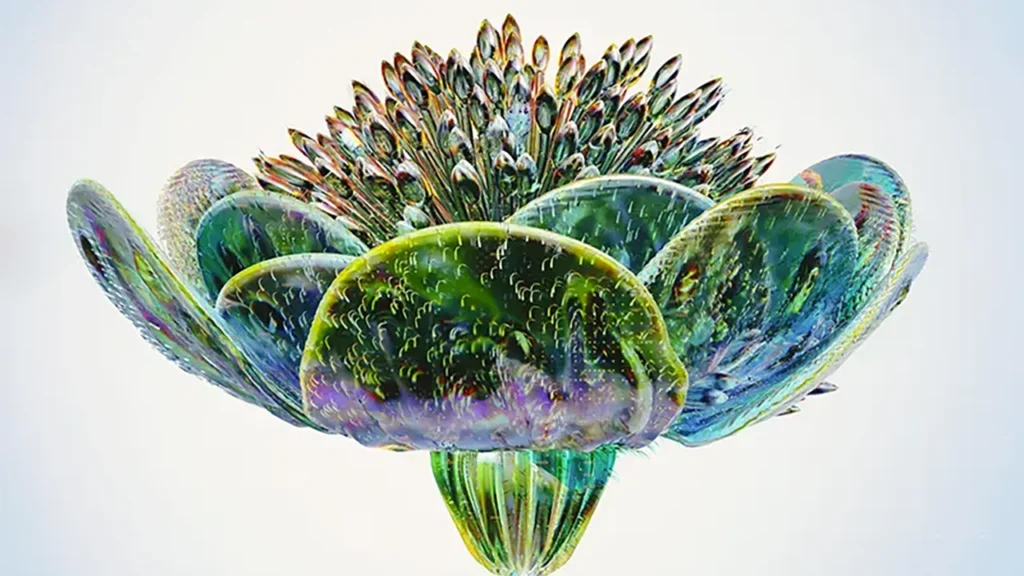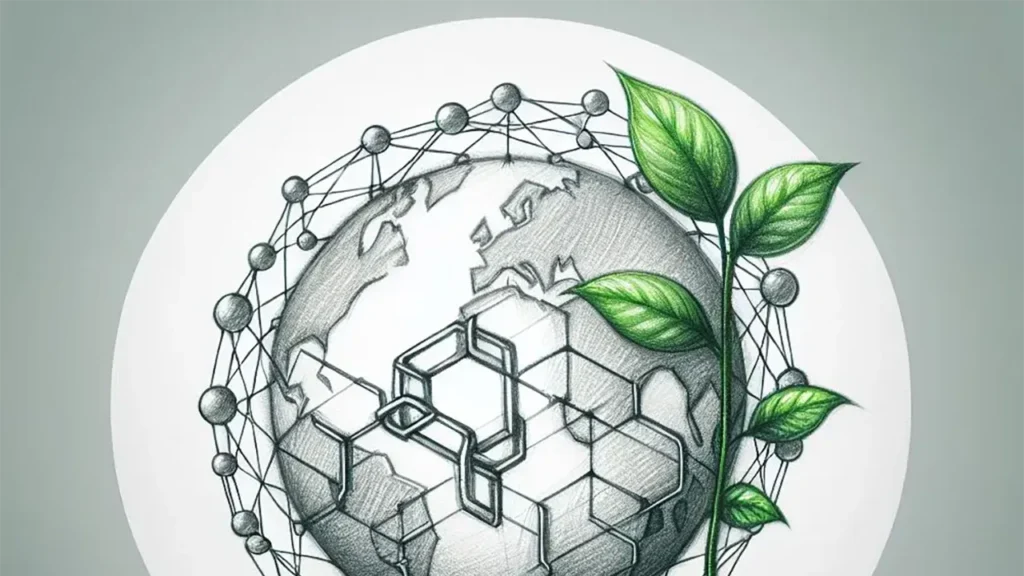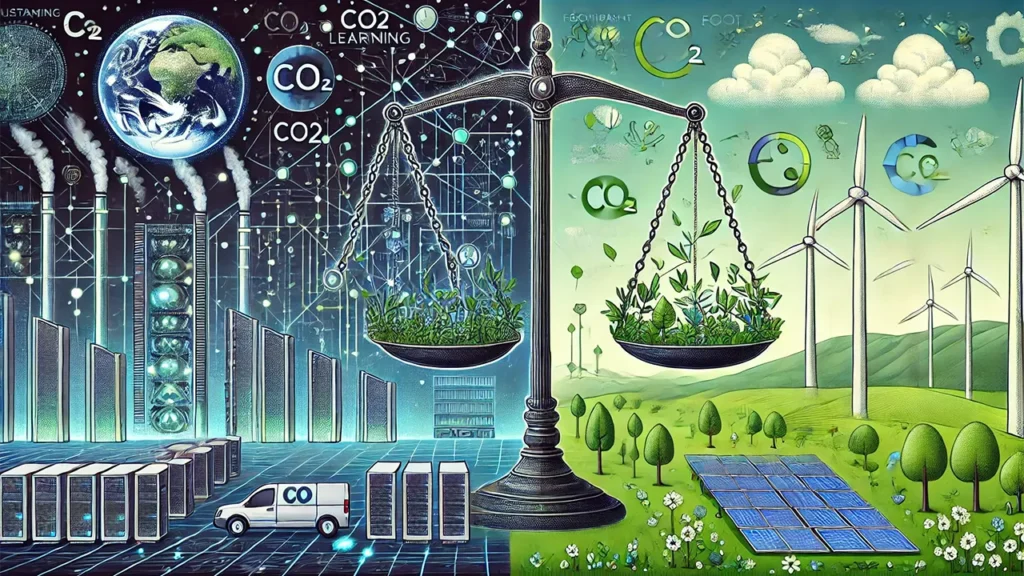Table of Contents
The EU’s sustainable future
As the world confronts the urgent realities of climate change and environmental decline, the European Union (EU) has stepped forward as a trailblazer in the quest for sustainability. Central to this mission is the adoption of clean energy and the seamless integration of forward-thinking technologies like artificial intelligence (AI). We find ourselves at a pivotal crossroads where today’s decisions will shape the legacy we leave behind for future generations.
The EU’s dedication to sustainability stems from a simple yet powerful truth: our planet’s resources are finite. Achieving a balance between economic growth and environmental responsibility is not just desirable – it’s essential. By championing clean energy and tapping into AI’s transformative capabilities, the EU is charting a course toward a future where prosperity and planetary health go hand in hand.
In this article, we’ll dive into the EU’s bold clean energy goals and initiatives, the game-changing role of AI in revolutionizing energy efficiency, and the challenges and opportunities that stand before us on the road to a greener, more sustainable tomorrow.
The importance of clean energy in the EU
The EU has long understood that shifting to clean energy isn’t just a checkbox for climate action – it’s a cornerstone for a thriving, resilient future. Beyond curbing emissions and cutting ties with fossil fuel dependence, clean energy powers up more than the grid. It paves the way for a healthier planet, boosts energy security, fuels economic growth, and sparks job creation across the region.
- Reduced greenhouse gas emissions
- Preservation of natural resources
- Mitigation of air and water pollution
- Diversification of energy sources
- Job creation in the renewable energy sector
- Reduced reliance on imported fossil fuels
- Improved public health through cleaner air and water
- Sustainable communities for future generations
- Increased energy access in remote areas
By prioritizing clean energy, the EU is taking a proactive stance in addressing the global climate crisis while simultaneously fostering economic prosperity and social well-being for its citizens.
The role of artificial intelligence in transforming the EU’s sustainable future
Artificial intelligence (AI) has emerged as a game-changer in the realm of clean energy, offering innovative solutions to optimize energy production, distribution, and consumption. By harnessing the power of data analytics, machine learning, and predictive modeling, AI is revolutionizing the way we approach energy management.
- Predictive Maintenance: AI algorithms can analyze data from sensors and equipment to predict potential failures and schedule maintenance, reducing downtime and maximizing efficiency.
- Demand Forecasting: Machine learning models can forecast energy demand based on various factors, such as weather patterns, historical data, and consumer behavior, enabling better resource allocation and grid management.
- Smart Grid Optimization: AI-powered systems can dynamically adjust energy flows, balance supply and demand, and integrate distributed energy resources, ensuring a more efficient and reliable energy grid.
- Renewable Energy Integration: AI can optimize the integration of intermittent renewable energy sources, such as solar and wind, into the grid by predicting generation patterns and managing energy storage systems.
By leveraging the power of AI, the EU can unlock new levels of efficiency, reliability, and sustainability in its energy systems, paving the way for a future where clean energy is not only abundant but also intelligently managed.
EU’s clean energy targets and initiatives
The EU has set ambitious targets and implemented various initiatives to accelerate the transition to a clean energy future. These efforts are driven by a collective commitment to mitigate climate change, reduce greenhouse gas emissions, and promote sustainable development.
- Renewable Energy Targets:
- The EU aims to achieve a 32% share of renewable energy in its overall energy mix by 2030.
- This target includes increasing the share of renewable energy in the electricity, heating, and transportation sectors.
- Energy Efficiency Initiatives:
- The EU has implemented various energy efficiency measures, such as improving building insulation, promoting energy-efficient appliances, and encouraging sustainable transportation.
- The goal is to achieve a 32.5% improvement in energy efficiency by 2030, compared to projected levels.
- Emissions Reduction Targets:
- The EU has committed to reducing greenhouse gas emissions by at least 55% by 2030, compared to 1990 levels.
- This target is part of the EU’s long-term strategy to become climate-neutral by 2050.
- Clean Energy Transition Initiatives:
- The European Green Deal is a comprehensive plan to transform the EU into a sustainable and resource-efficient economy.
- The EU has established various funding mechanisms, such as the Innovation Fund and the Modernisation Fund, to support clean energy projects and technologies.
By setting ambitious targets and implementing comprehensive initiatives, the EU is leading the charge in the global effort to combat climate change and promote a sustainable energy future.
Advancements in clean energy technologies
The EU’s commitment to clean energy has spurred significant advancements in various clean energy technologies, enabling more efficient and cost-effective solutions for energy production, storage, and distribution.
Solar Energy
- Photovoltaic (PV) technology has witnessed remarkable improvements in efficiency and cost-effectiveness.
- Innovative solutions, such as building-integrated PV systems and concentrated solar power, are gaining traction.
Wind Energy
- Advances in wind turbine design, including larger rotor blades and taller towers, have increased energy capture and efficiency.
- Offshore wind farms are becoming more feasible, unlocking vast renewable energy potential.
Energy Storage
- Battery technologies, such as lithium-ion and flow batteries, are enabling efficient energy storage solutions for intermittent renewable sources.
- Thermal energy storage systems are being developed for concentrated solar power plants.
Hydrogen and Fuel Cells
- Hydrogen is emerging as a promising clean energy carrier, with advancements in production, storage, and fuel cell technologies.
- Hydrogen can play a crucial role in decarbonizing sectors like transportation and industry.
Smart Grid Technologies
- Advanced metering infrastructure, smart sensors, and communication networks are enabling more efficient and reliable energy distribution and management.
- Smart grid technologies facilitate the integration of distributed energy resources and demand-side management.
These advancements in clean energy technologies are not only improving efficiency and reducing costs but also paving the way for a more sustainable and resilient energy system within the EU.
How AI is being used to optimize clean energy production and consumption
The integration of AI into clean energy systems is turning traditional energy models on their head, revolutionizing how we produce, distribute, and consume energy. Thanks to data analytics, machine learning, and predictive modeling, AI is unlocking levels of efficiency, reliability, and sustainability never seen before. Take predictive maintenance and asset management: AI algorithms sift through sensor data to anticipate equipment failures and schedule timely maintenance, slashing downtime and extending the life of clean energy assets. This proactive approach isn’t just about preventing breakdowns; it translates to substantial cost savings and improved operational efficiency. Then there’s demand forecasting and load management. Machine learning models can predict energy needs based on a mix of weather forecasts, past usage trends, and consumer behavior. This foresight allows for smarter energy production, optimized distribution, and effective storage, minimizing waste and keeping the power supply steady.
When it comes to renewable energy integration and grid optimization, AI steps up by dynamically managing energy flows and balancing supply with demand. It helps seamlessly integrate distributed energy sources—think solar panels on rooftops and wind turbines—into the main grid. The result? A robust, reliable energy system that can handle the variability of renewables with finesse. And let’s not forget energy efficiency in buildings. AI-powered systems can tailor heating, cooling, and lighting based on when people are present, weather conditions, or fluctuating energy prices. This smart automation drives significant energy savings and cuts down carbon emissions from buildings. With AI in its toolkit, the EU is poised to supercharge its clean energy ambitions. It’s not just about adopting new technology; it’s about harnessing AI to elevate sustainability and accelerate the shift to a low-carbon future.
Challenges vs. Opportunities: The EU’s Sustainable Balancing Act
While the EU’s pursuit of a sustainable future through clean energy and AI presents numerous opportunities, it is also accompanied by challenges that must be addressed.
Challenges
- Upfront investment costs for clean energy infrastructure and AI systems
- Integration of intermittent renewable energy sources into existing grids
- Workforce retraining and skill development for the clean energy and AI sectors
- Cybersecurity risks associated with interconnected energy systems
- Public acceptance and awareness of new technologies
Opportunities
- Job creation in the clean energy and AI sectors
- Increased energy security and independence
- Export potential for clean energy technologies and AI solutions
- Improved public health and environmental quality
- Positioning the EU as a global leader in sustainable development
By addressing these challenges head-on and capitalizing on the opportunities presented, the EU can pave the way for a sustainable future that benefits both its citizens and the global community.
EU’s investment in clean energy and AI research
Recognizing the pivotal role of clean energy and AI in shaping a sustainable future, the EU has invested significantly in research and development initiatives to drive innovation and foster technological advancements.
- Horizon Europe:
- The EU’s flagship research and innovation program, Horizon Europe, has allocated substantial funding for clean energy and AI projects.
- This includes support for research in areas such as renewable energy technologies, energy storage solutions, and AI applications for energy systems.
- European Green Deal Investment Plan:
- The European Green Deal Investment Plan aims to mobilize at least €1 trillion in sustainable investments over the next decade.
- This includes funding for clean energy infrastructure, energy efficiency projects, and the development of AI solutions for sustainability.
- Public-Private Partnerships:
- The EU has established various public-private partnerships to foster collaboration between academia, industry, and government in the fields of clean energy and AI.
- These partnerships facilitate knowledge exchange, joint research, and technology transfer.
- Regional Development Funds:
- The EU’s regional development funds provide financial support for clean energy and AI projects at the local and regional levels.
- This ensures that the benefits of these technologies are distributed across the EU and contribute to sustainable development in all member states.
By investing in research and development, the EU is nurturing a thriving ecosystem of innovation, driving technological advancements, and positioning itself as a global leader in clean energy and AI solutions.
The path forward for transforming the EU’s sustainable future
As we face the pressing realities of climate change and work toward a sustainable future, the EU’s focus on clean energy and AI shines as a beacon of progress. By tapping into renewable resources and harnessing the game-changing power of AI, the vision of a future where economic growth, environmental care, and social well-being thrive side by side becomes tangible.
The journey ahead is no easy feat. Yet, the EU’s ambitious goals, strategic initiatives, and deep investments in research and innovation reveal an unwavering commitment to overcome these hurdles. With collaboration, public-private partnerships, and a relentless push for innovation, we can unlock a new era of energy systems that are not only efficient and reliable but also truly sustainable.
Looking ahead, the EU’s leadership in merging clean energy and AI offers a roadmap for the world. By adopting these revolutionary technologies and fostering global cooperation, we can shape a reality where clean energy is not just plentiful but intelligently managed and accessible to all. Join this exciting journey toward sustainability. Discover the latest advances in clean energy and AI, stay updated on EU projects, and share your insights to fuel progress. Together, we can build a greener, stronger, and more prosperous planet for generations to come. Visit [website link] to learn more and be part of the movement.
Literature
- The role of Artificial Intelligence in the European Green Deal: https://www.europarl.europa.eu/RegData/etudes/STUD/2021/662906/IPOL_STU%282021%29662906_EN.pdf
- AI and Generative AI: transforming Europe’s electricity grid for a sustainable future: https://digital-strategy.ec.europa.eu/en/library/ai-and-generative-ai-transforming-europes-electricity-grid-sustainable-future
- Shaping the future of energy in Europe: Clean, smart and renewable: https://www.greenfriendlylabs.com/wp-content/uploads/2024/11/Signals_2017_TH-AP-17-001-EN-N.pdf
- EUROPEAN COMMISSION: on a new approach for a sustainable blue economy in the EU Transforming the EU’s Blue Economy for a Sustainable Future: https://eur-lex.europa.eu/legal-content/EN/TXT/PDF/?uri=CELEX:52021DC0240
- European approach to artificial intelligence: https://digital-strategy.ec.europa.eu/en/policies/european-approach-artificial-intelligence
- Energy and the Green Deal: https://commission.europa.eu/strategy-and-policy/priorities-2019-2024/european-green-deal/energy-and-green-deal_en
- Renewable energy targets: https://energy.ec.europa.eu/topics/renewable-energy/renewable-energy-directive-targets-and-rules/renewable-energy-targets_en
- Renewable energy trends and developments powering a cleaner future: https://www.ibm.com/think/insights/renewable-energy-trends




